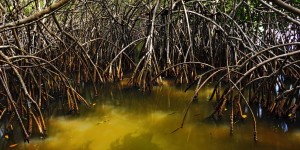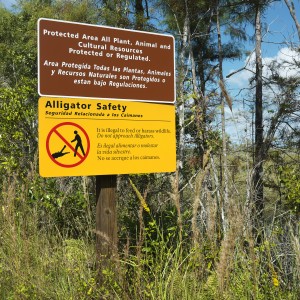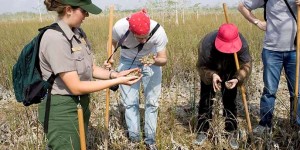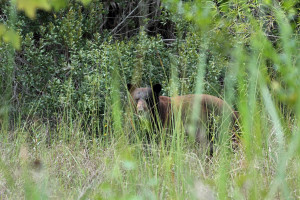 The Everglades is known for a lot of things like alligators and airboats. It’s also known for its mangrove forests. They’re out-of-this-world enchanting. The state of Florida has around 469,000 acres of mangrove forests.
The Everglades is known for a lot of things like alligators and airboats. It’s also known for its mangrove forests. They’re out-of-this-world enchanting. The state of Florida has around 469,000 acres of mangrove forests.
There are about 50 species of mangroves. Three mangroves species can be found in Florida. The Everglades is home to largest mangrove forest in North America. Mangroves grow and thrive in tropical and subtropical climates. These trees produce seeds that drop and get carried away by water or winds, and the seeds can pretty much grow wherever they land.
Florida is home to three species of mangroves: the red mangrove, the black mangrove, and the white mangrove.
The most well-known, and easily seen in the Everglades, is the red mangrove. It’s a salt-tolerant tree that grows in areas with low-oxygen soil. They can take freshwater from the saltwater to survive. These mangroves have prop roots that make them look like they’re standing on the water. With these roots, the forests can handle rising tides in-and-out of the Everglades. The roots are reddish in color.
The black mangrove sits at a higher elevation than the red mangrove. This mangrove has finger-like projections that protrude from the soil around the trunk of the tree.
The white mangrove can be found at the highest elevations of these three species. This mangrove’s roots do not show; it has light, yellow-green leaves.
The Florida coastline and the Everglades benefit from mangroves. They stabilize the coastline and higher lands by reducing erosion with their roots. The mangroves block winds, waves, floods, tides, and storm surges from damaging the land. The bigger, wider, and thicker a mangrove forest, the more protection to the environment it can provide. These mangroves can also filter water and keep water quality high.
The mangroves also provide a habitat for a variety of birds and marine life. Many fish and animals use the forests as protection, shelter, or a place to find food.
According to American Forests, the oldest national conservation organization in the country, almost half of the world’s old-growth mangrove forest have disappeared in the past 50 years. Humans are a major cause to the loss of the mangrove forests due to industrial shrimp farming and coastal development.
In Florida, state and city laws have been established to protect these forests, which are a key role in Florida’s ecosystem.
Ride Through the Mangroves
Do you want to see these mangroves up close? There’s plenty of them to see in the Everglades! They are breathtaking!
An airboat ride can give you a look at these forests, as well as lots of other plants and animals. Book an airboat tour by calling 800-368-0065 or visiting our Everglades Airboat Tours page. We are open seven days a week 8:30 a.m. to 5 p.m. If paying by cash, adults cost $40 (plus tax) and children 12 and under cost $20 (plus tax. If paying by credit card, adults cost $45 (plus tax) and children cost $25 (plus tax).
 Whether we’re on vacation, a trip, or just going out for a walk, safety should always be a priority. When entering the Everglades, you are entering a beautiful National Park filled with wildlife and plant life. Being outdoors, you risk dealing with inclement weather, bugs, and other unpredictable things.
Whether we’re on vacation, a trip, or just going out for a walk, safety should always be a priority. When entering the Everglades, you are entering a beautiful National Park filled with wildlife and plant life. Being outdoors, you risk dealing with inclement weather, bugs, and other unpredictable things. The Everglades is more than just a Park; it is filled with endless activities and programs for visitors to partake in to learn more, experience more, and help more. Also, there are programs in the Park that are led by researchers, scientists, and experts to find out more about the Park, help the Park thrive, and solve problems within the Park.
The Everglades is more than just a Park; it is filled with endless activities and programs for visitors to partake in to learn more, experience more, and help more. Also, there are programs in the Park that are led by researchers, scientists, and experts to find out more about the Park, help the Park thrive, and solve problems within the Park. The Florida Black Bear calls the Everglades its home. It lives all over Florida and is the state’s largest land mammal. They can weigh anywhere from 125 to 400 pounds.
The Florida Black Bear calls the Everglades its home. It lives all over Florida and is the state’s largest land mammal. They can weigh anywhere from 125 to 400 pounds.





